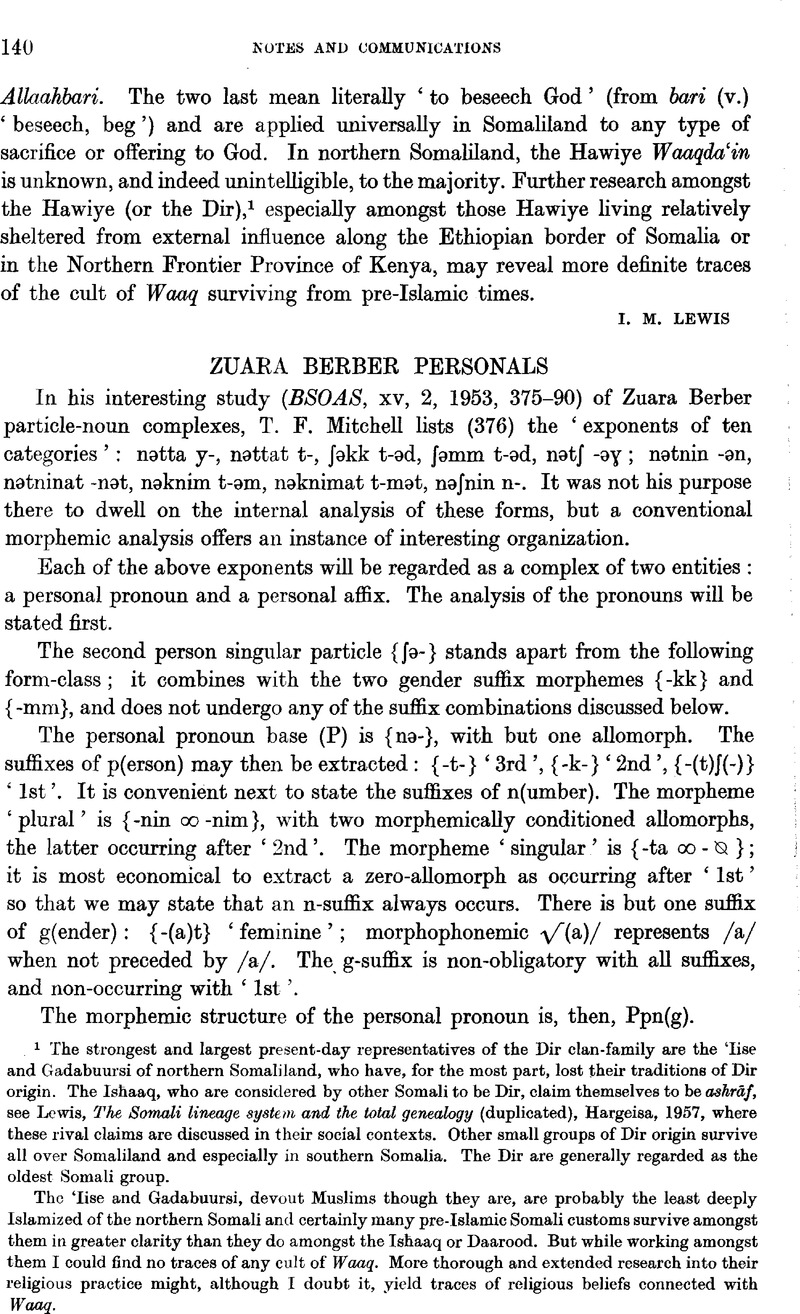Article contents
Zuara Berber personals
Published online by Cambridge University Press: 24 December 2009
Abstract

- Type
- Notes and Communications
- Information
- Copyright
- Copyright © School of Oriental and African Studies, University of London 1959
References
1 The strongest and largest present-day representatives of the Dir clan-family are the 'lise and Gadabuursi of northern Somaliland, who have, for the most part, lost their traditions of Dir origin. The Ishaaq, who are considered by other Somali to be Dir, claim themselves to be ashrāf, see Lewis, The Somali lineage system and the total genealogy (duplicated), Hargeisa, 1957, where these rival claims are discussed in their social contexts. Other small groups of Dir origin survive all over Somaliland and especially in southern Somalia. The Dir are generally regarded as the oldest Somali group.
The 'lise and Gadabuursi, devout Muslims though they are, are probably the least deeply Islamized of the northern Somali and certainly many pre-Islamic Somali customs survive amongst them in greater clarity than they do amongst the Ishaaq or Daarood. But while working amongst them I could find no traces of any cult of Waaq. More thorough and extended research into their religious practice might, although I doubt it, yield traces of religious beliefs connected with Waaq.
- 2
- Cited by


